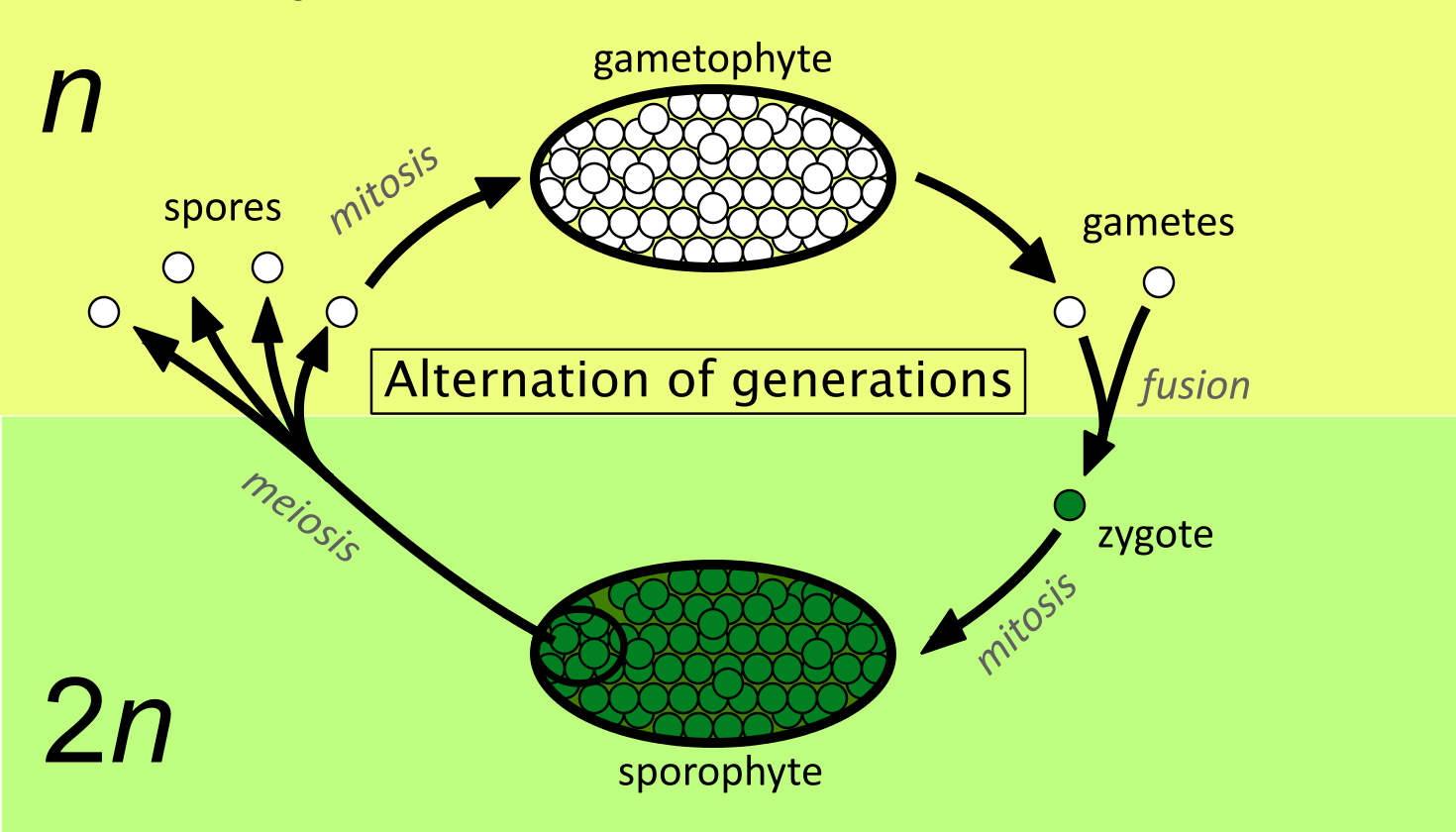2.5.1: Introduction to Early Land Plants
- Page ID
- 47634
Learning Objectives
- List the shared derived characteristics of land plants.
- Relate these adaptations to the movement from aquatic to terrestrial habitats.
- List the ancestral characteristics that land plants share with green algae.
- Describe the basic life cycle shared by plants.
Land Plants
Land plants are sometimes referred to as “embryophytes” due to the evolution of the embryo, a zygote that is retained and nourished by the female gametophyte as it grows. Embryophytes share many common features, most corresponding to the selective pressures from the initial movement onto land. The embryo is one of these, providing higher likelihood of success for offspring in a new, harsh environment. In addition to the embryo, all plants have the same basic life cycle: alternation of generations (Figure \(\PageIndex{1}\)). Much like the marine algae, the first plants were living in an environment where they needed to increase their chances of reproductive events. Multicellular stages on both sides of the life cycle increases the number of reproductive propagules. All plants are also multicellular, with tissues and multicellular gametangia.

Other adaptations to life on land include the desiccation-resistant compound sporopollenin. This is found in the cell walls of spores of early land plants and in pollen of seed plants, hence the name sporo - pollen - in. It is also found in the cell walls of a few green algae. On the exterior, plants are surrounded by a waxy cuticle that helps protect them from their outer environment.
Much like their green algal predecessors, plants store their carbohydrates as starch inside plastids, plastids with two membranes (the result of primary endosymbiosis), cell walls containing cellulose, and have the pigments chlorophyll a, chlorophyll b, and carotenoids. For this reason, along with genetic sequencing, land plants and green algae are grouped together in the Viridiplantae (Figure \(\PageIndex{2}\)).

The First Land Plants
Bryophytes and seedless vascular plants were the first groups to evolve on land. While the order of events during this period in plant evolution remains somewhat murky, evidence points to bryophytes evolving first, followed by the SVPs.
Bryophytes are the only group of land plants that lacks lignified vascular tissue, though some mosses do contain a form of conducting tissue. They tend to be small of stature and lack true stems, roots, or leaves. Bryophytes are also the only group of land plants to have a gametophyte dominant life cycle.
Seedless vascular plants transition to a sporophyte dominant life cycle with a branching sporophyte. They evolve lignified vascular tissue, developing true roots, stems, and leaves. This tough, lignified tissue allows some species within this group to form trees up to 100 feet tall.
Attribution
Content by Maria Morrow, CC-BY-NC

